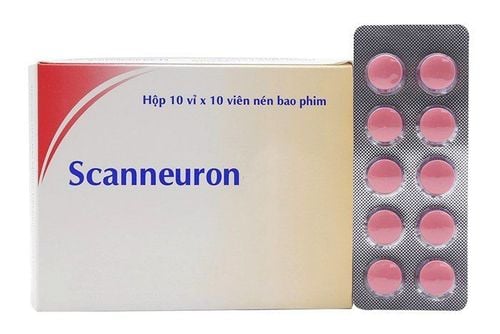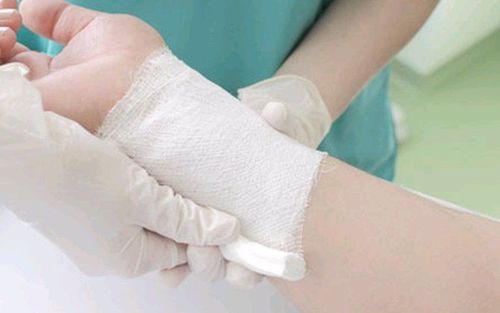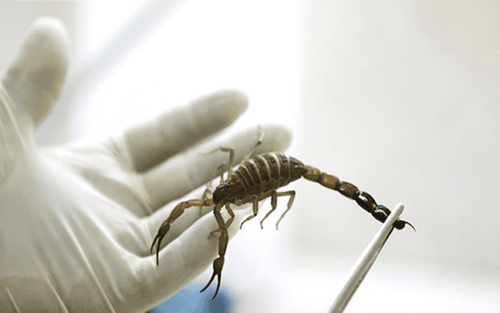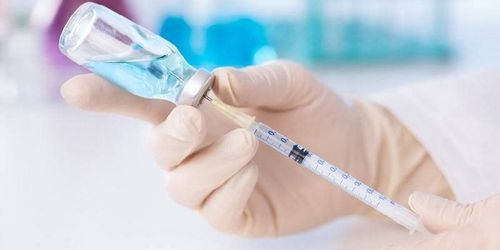This is an automatically translated article.
Posted by Doctor Le Thanh Cam, Department of Pediatrics - Neonatology - Vinmec Danang International General HospitalIn daily life, bee stings are quite common in both adults and children. The most common types of bees are: honey bees, yellow bees, bumblebees, bumblebees... the difference between honey bees and other bees is that when stinging the honey bee's proboscis is broken, the break contains the sacs. Venom stays in the patient's skin, while other bees' proboscis can retract and sting again and again.
1. Cause of Accidents by Bee Stings Dangerous complications of bee stings can be fatal due to anaphylaxis. Particularly in bumblebees, ground bees, honey bees: acute renal failure, hemolysis, myoglobinuria due to rhabdomyolysis, acute respiratory distress syndrome (ARDS), multi-organ failure.
Causes of bee stings include:
Due to accidents at work, daily life, when going to the forest, bees are often stung by bees, wasps, wasps, yellow bees, and are highly toxic. Beekeeping for honey or wild honey is usually honey bees. Due to children teasing, throwing, breaking the hive is usually yellow bees or wasps. 2. Diagnosis of accidents caused by bee stings 2.1. Definitive diagnosis Ask the disease
Characteristics of bees:
Because the family brought the bee or described the hive and the bee's shape. Wasp: long body, slender belly, yellow body with black stripes, often nests on trees and roofs. Ground bees: long, large, black bodies, nesting in the wild forest. Honey bee: small body, with ruffled hair, red-brown color, often nesting in trees in the forest, after stinging, put the needle on the victim's body. Time of bee sting.
History of allergies.
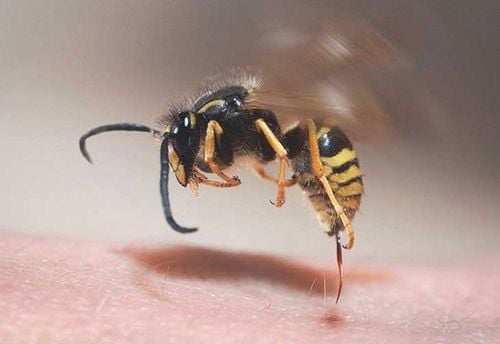
Hình ảnh loài ong vò vẽ
2.2 Clinical symptoms Take vital signs: temperature, pulse, blood pressure, breathing rate. Anaphylaxis occurs in all bees, usually occurring within the first 1-2 hours. Therefore, it is necessary to closely monitor in the first 6 hours to detect and promptly treat anaphylaxis.
Local:
Manifestations: red skin, sharp pain, itching, edema, a few centimeters in diameter around the burn. The sharp pain after a few minutes turns into a burning pain. The middle of the bee sting is white necrotic, surrounded by red borders, edema, lesions on the skin that persist for a few days to a few weeks. If there are many nodules, it can cause edema of the entire limb or trunk. Bee stings in the oropharynx cause edema, laryngospasm, causing acute difficulty breathing. Bee stings in the area around the eyes or eyelids can cause cataracts before the lens, iritis, vitreous abscess, eyeball perforation, glaucoma, and refractive disorders. Local symptoms are most severe 48-72 hours after a bee sting and last for weeks. Rhabdomyolysis that develops after 24-48 hours may lead to anuria due to tubular obstruction. Bee venom injected directly into the blood vessels can cause faster, more severe symptoms.
Systemic symptoms:
Itchy papules, urticaria, burning sensation within a few hours after burning. Occurs when there are many nodules. Systemic symptoms may manifest immediately (it is difficult to distinguish between bee venom shock from anaphylaxis) or after several days, and include widespread edema, burning sensation, sweating, and inflammation. conjunctiva. Gastrointestinal: Manifestations of nausea, vomiting, abdominal pain, diarrhea. Hepatocellular necrosis may occur in patients who die.
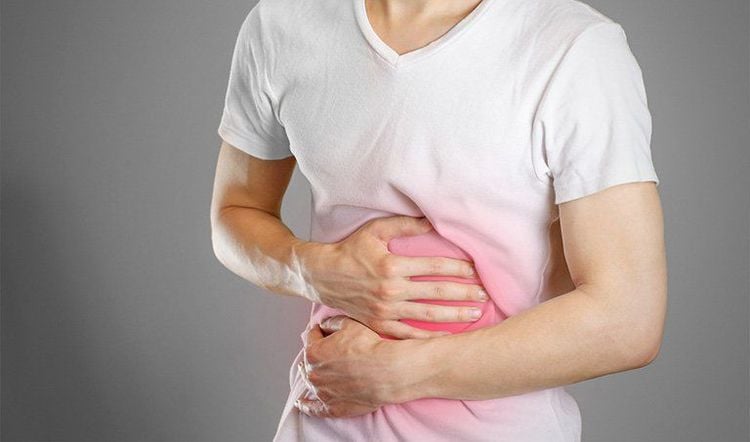
Người bị ong đốt có thể xuất hiện tình trạng đau bụng và buồn nôn
Skin: generalized skin redness, angioedema, urticaria, itching. Respiratory: Tongue edema, bronchospasm, increased secretion of bronchial fluid, laryngospasm causing difficulty breathing in the larynx. In severe cases, pulmonary hemorrhage may occur. Cardiovascular: tachycardia, hypotension, syncope, ECG changes ST and T. Gastrointestinal: bloating, abdominal cramps, vomiting, nausea, diarrhea. Slow response:
Appears days after a bee sting (8-15 days). Gell and Coombs types III and IV. Serum sickness-like reaction with fever, urticaria, arthralgia. Guillain-Barré neurologic reaction, extrapyramidal syndrome, meningoencephalitis, acute encephalopathy. Renal manifestations: fatty kidneys, glomerulonephritis. 2.3 Tests to assess severity and monitor progress: Blood count Biochemistry: Urea, creatinine, electrolytes, sugar, elevated CK, CK-MB, AST, ALT, total bilirubin, direct, indirect , serum iron, reticulocytes, direct and indirect coombs. Urinalysis, myoglobinuria, hemoglobinuria. Basic coagulation. When there is liver damage and coagulation disorders, complete coagulation should be done at least once a day. ECG. Cardiopulmonary X-ray.
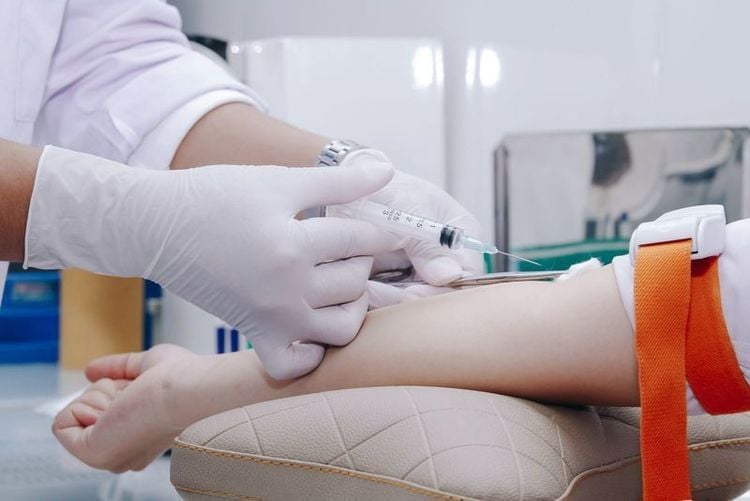
Người bệnh có thể được lấy máu ngoại vi làm xét nghiệm đánh giá mức độ nặng
2.3. Differential diagnosis Differential diagnosis with stings caused by other insects.
3. Treatment Principles of treatment: Emergency treatment.Treat symptoms, complications.There is no specific treatment drug, mainly symptomatic treatment.
At the sting: apply cold, relieve pain with antihistamine cream (Phenergan cream,...) 2-3 times/day. Reduce edema. If you have anaphylaxis, you will be treated according to the anaphylactic shock treatment protocol. Correct electrolyte disturbances, pay special attention to hyperkalemia. Alkalize the urine when there is sassafras colored urine or Myoglobin/Hemoglobin (+) in the urine. Prevention of acute renal failure: Limit fluid, treat electrolyte disorders:
Mild: Give plenty of water, 2000-3000ml of water/24 hours. Severe: with hypotension, or with > 10 nodules: Enhance detoxification with aggressive diuresis (see General diagnosis and management of acute poisoning). Hemodialysis: when one of the following criteria is present:
Acute renal failure with shock or ARDS or liver damage (liver enzymes > 1000 units/L) or impaired consciousness (glasgow < 11). In children when the number of stings/weight > 2 Shock + ARDS Shock + liver damage Shock + consciousness disorder ARDS + liver damage ARDS + consciousness disorder Liver damage + consciousness disorder Hyperkalemia > 6mmol /L with acute renal failure or shock or ARDS or liver damage (liver enzymes > 1000 units/L) or impaired consciousness (glasgow < 11). Coagulation disorders, anemia, thrombocytopenia: transfusion of fresh frozen plasma, red blood cells, platelets, according to the patient's condition.
Respiratory failure: due to acute pulmonary edema, pulmonary bleeding: high-dose oxygen ventilation, non-invasive mechanical ventilation CPAP+PS, or intubation, mechanical ventilation with PEEP.
Vaccinate against tetanus if the area of the bee sting is contaminated (SAT 2000 subcutaneously).
Remove the stinger from the patient's skin
Mild allergies (urticaria): oral or injected antihistamines, corticosteroids.
4. Monitor Vital Signs, Urine Volume, Urine Color. Amount of water in and out, weight per day when showing oliguria. Electrolyte, TPTNT. Severe cases with complications: monitor for 1-2 hours until the condition is stable. Uncomplicated cases: monitor every 4-6 hours for the first 24 hours, if the condition is good, discharge from the hospital. 5. Prognosis and complications The prognosis depends on the type of bee, the number of stings, the location of the sting, early or late aggressive diuretic treatment, and whether there is a co-morbid disease.
Complications: liver failure, acute renal failure anuria, coagulation disorders, hemolysis, multi-organ failure causing death.
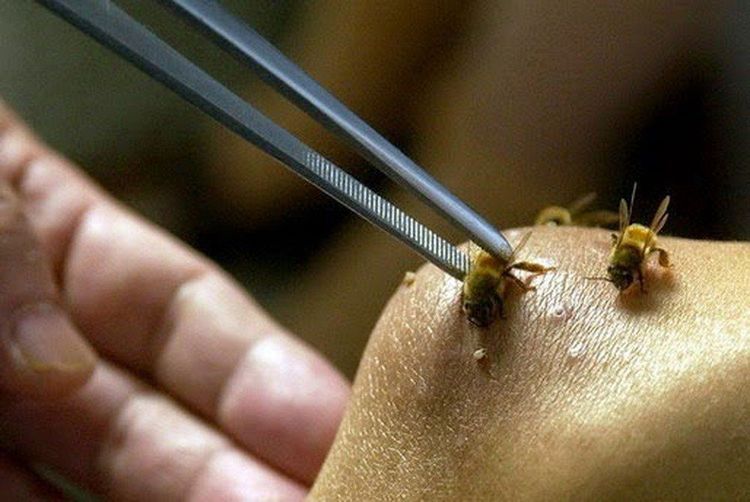
Vị trí ong đốt và số lượng vết đốt ảnh hưởng đến quá trình điều trị và tiên lượng
Secondary infection after a sting (rare) but if present it is common on the 5th day after the bee sting when local reactions have subsided but swelling, heat, redness, and pain are greatly increased , maybe even fever, need for antibiotics.
6. Prophylaxis For people with atopic allergies, especially those with a history of allergy to bees, they should have ready-made prefilled syringes with adrenaline (EpiPen contains: 0.3 mg, EpiPen Jr. contains 0.15mg) for injection. under the skin if stung by a bee. When entering the forest, you should not spray perfume, makeup and wear colorful clothes or clothes with flowers printed because it will attract bees. When going on a picnic, note that sweet foods and drinks also attract bees. Do not go barefoot into the forest because you may step on beehives. Do not disturb the hive. When there is a hive in your home or garden, you should ask a professional to remove the hive. For detailed advice, please come directly to Vinmec health system or register online HERE.





